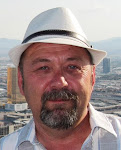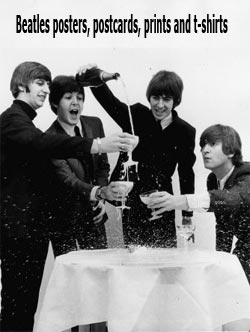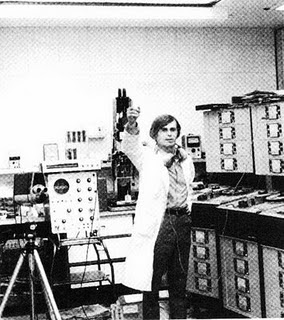The Beatles Fact and Fiction 1960-1962 by Eric Krasker was first published in French as
"Enquête sur un mythe 1960-1962" in 2003.
Last year, the book was finally published in an English, updated and revised edition. I bought it and started to read it, but I was not able to finish it until now.
The years that are covered in the book is an interesting period, and one that's more important this year, because it's now the fiftieth anniversary of 1960. Krasker was born that year, so his is not a first hand account, his work has been that of a detective, historian and researcher.
There have been several earlier books dealing with these formative years of the early Beatles. Allan Williams, who managed the Beatles at this time, gave his account of these years back in 1975 in his
"The Man Who Gave The Beatles Away" book, early Beatles historian, the late Gareth Pawlowski collected a lot of photos, record sleeves and information in his
How They Became the Beatles
from 1989, and there's been inside information (and myths) in books by people like Pete Best, Cynthia Lennon and Bill Harry. But the current standard work about this period is a book by Swedish author Hans Olof Gottfridsson, a tome with the title
From Cavern to Star-Club, published in 1997.
In the course of investigating the era, Krasker seems to have become annoyed by a number of mistakes, misinterpretations and erroneous assumptions and speculations in the "From Cavern to Star-Club" book. A great deal of this new book is dedicated to expose these errors and explain how and why Gottfridsson was mistaken.
Krasker is using a method which relies heavy on documentation and rationing. In his eyes, no fact can be established unless it is certified by a document. Under each "fact" or "myth", Krasker explains the circumstances, where each "fact" has been previously published, what evidence there is and discusses what the possibilities are.
Sometimes, he has no conclusion because there's no theory which can be established as a fact - there's just no documentation. But at least he gives us all the previous information, tells us who wrote what and what he suspects is the truth.
Every time Krasker quotes from earlier publications, a numbered footnote corresponds to a list after each chapter where the original source is named. You can move to and fro as you're reading, or just explore the list after finishing each chapter, which is what I did.
Like I said, these years are important in the history of the Beatles. The years they spent as The Beatles in Hamburg and Liverpool formed their characters, playing style, competitiveness and explains the dynamics within the band. And a number of very important and interesting subjects are from this time period. What caused Stuart Sutcliffe's death? Why was Pete Best sacked as their drummer? Why was it Ringo that was hired? Under what circumstances did the Tony Sheridan Polydor recordings come about? How and why were these recordings "doctored" for the American market? Did Raymond Jones really exist? What are the Star-Club recordings, how and when were they recorded, how many sets were documented on the tape (or was it tapes), and what's the most likely running order of those songs?
Since the publication of the French edition of the book, several new facts have appeared, a few myths have been exposed and some hitherto unheard songs from the Star-Club recordings have been unearthed. Some times the original text has been kept with these new findings discussed at the end of the chapter, and some times the entire chapter has been rewritten in the light of the new discoveries.

So why was Pete Best sacked? This book will tell you about the many theories; George Martin was dissatisfied with Best's skills as a drummer, he was too popular with the girls, he was a loner and didn't fit in with the rest of the group, he wouldn't or couldn't conform to "the Beatles haircut", Epstein didn't want Pete's mother Mona Best to involve herself with the group's bookings, Paul didn't want to compete with Pete's looks, etc etc. Even though this is the kind of fact that can't be established with conclusive documentation, Krasker - a drummer in his own right - gives us a plausible conclusion. After a number of drummerless periods as the Quarrymen, the Moondogs and Silver Beatles, they finally found a drummer that wanted to stay, and had a brand new kit. Even though he wasn't good enough, they stuck with him, hoping he would improve and evolve along with themselves. And he did, but only to a certain extent. After he discovered his "atom beat", with heavy use of the bass drum, he was stuck in a rut. His drumming style was a problem in the studio, even as early as at the Polydor recordings, and he did nothing to accomodate the producer's needs, neither at Polydor, nor at Decca or EMI. He only had one style of drumming, which he could perform slow, medium or fast. Krasker even reckons that John Lennon's signature way of performing his rythm guitar parts was developed to compensate for Best's lack of time keeping. Besides that, he didn't have the personality. Krasker has spent time with Best and even though Best was an amiable fellow and good company, he was a quiet kind and probably no match for the wit and humour of the rest of the lads.
As for the cause of Stuart Sutcliffe's death, the movie "BackBeat" from 1994 has left an imprint in many people's minds that a blow to the head from a fight in Liverpool may have ultimately lead to Sutcliffe's headaches and later death in Hamburg in 1962. Krasker sticks to the facts: the post-mortem declares that Sutcliffe's deat was caused by
"cerebral paralysis due to bleeding into the right ventricle of the brain". A possible brain tumour, as reported by Philip Norman in his book "Shout!", based on some x-ray plates showing a small shadow in Start's brain is dismissed, because it's not reported in the post-mortem. Surely they would have found it if it was ever there. A possible blow to the head from a fight, either with teddy boys in Liverpool, or as the late Albert Goldman wrote in his scandalous "The Lives of John Lennon", with Stuart's mate Lennon, causing an indentation in the skull is not reported in the post-mortem, and if there ever was one, they would have reported it. The chapter also speculates that Stuart's brain may have suffered from the abuse of drugs (preludin), alcohol and cigarettes, but again reaches no conclusion.
This book does not replace Gottfridsson's "From Cavern to Star-Club", but is an important addendum and a must-read if you're interested in the rich mythology surrounding the early history of the Beatles. It will put you straight about the facts surrounding the Polydor recording sessions, and correct earlier mistakes in Gottfridsson's book. The book is thoroughly illustrated with photos, record sleeves and important documents of the era. Ending the 442 pages of this book are four handy references: a bibliography, a name index, a song index and an index of the contents of the book.
Krasker is also co-author of the French discography book of the Beatles, "La France et Les Beatles", from 2005.
Preview the book.
Order the book.
































































